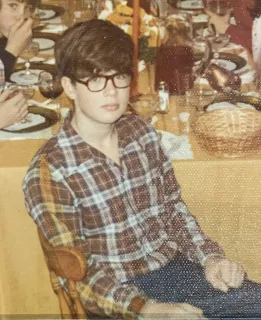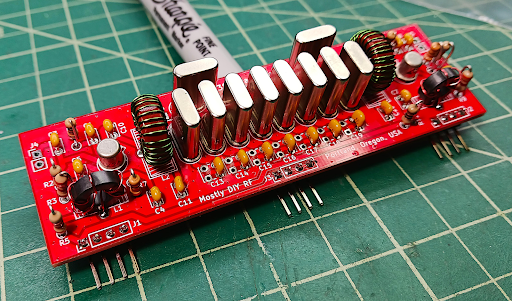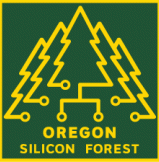SolderSmoke Podcast #257 is available.
Video version: https://www.youtube.com/watch?v=xOoZiHbC4Ag
Audio version: https://soldersmoke.com/soldersmoke257.mp3
Join the discussion - SolderSmoke Discord Server:
Documentation on Hackaday:
https://hackaday.io/project/
SolderSmoke YouTube channel:
https://www.youtube.com/@
SolderSmoke blog DCR posts:
https://soldersmoke.blogspot.
-----------------------------
Lot of success! So far 22 completed receivers: 35 others are being built.200 or so people are on the Discord server.
What a great achievement this is! Folks are homebrewing receivers.
Scott KQ4AOP heard his very first amateur radio signals through this receiver. FB!
Lots of great ham homebrew spirit. NE3U, N9TD and others 3d printing coil forms for others. FB
It is not too late. Dean's videos and the Discord server will remain up, even when we ourselves have moved on.
Big Picture: Farhan's Four Stages -- All you need to build a rig: Oscillator, Filter, Mixer, Amplifier.
Homebrew and Manhattan vs. Kit built with PC board. We think Homebrew is a better experience. Dean recently assembled some Ikea kit furniture. Does that make him a carpenter? No.
We do update the schematic as we learn. This is similar to what happens to software. Github? Version 2.3? In the old days, when QST came once a month, we lived a harder life. We don't have to do that anymore.
Let's talk about the boards one by one:
The Oscillator (VFO or PTO):
-- Started out as an amalgam of Farhan circuits: We liked the very simple oscillator he used in his Hyderabad DC receiver project for the girls schools. No need for a hard-to-find variable cap. But we found we needed a 3.3 k ohm resistor in the emitter to make it go. We took the buffer/amp from Farhan's "Daylight Again" circuit, but later (much later!) added a .1uF cap across the source of the J-310.
-- With brass screw, not really a permeability tuned oscillator. Brass has same permeability as air. Works via Eddy currents. But the screw thing is very reminiscent of the old Collins PTOs, so we call it a PTO. And it IS s PTO if you used a steel screw. You should study the doc in the mods section about how to modify the PTO. Metalurgy matters!
-- We used silver mica caps in the frequency determining circuits. This is important.
The Mixer:
-- We started with a simple two diode, single transformer singly balanced mixer. Only LO signal would be balanced out. This would work, but we got a lot of AM breakthrough from Radio Marti, just above the 40 meter band. So we went with a homebrew diode ring mixer.
-- Important to unserstand how the diode ring really works: LO just switches on and off the diodes. Very cool that several builders sought to understand how diode ring works.
-- Best way to test the PTO and the Mixer? Put them together and look at the waveform at the mixer input. Is it flat topping? Then both stages are working.
-- Diplexer: From QRP legend W7EL's Optimized QRP transceiver. Seemed to help knock down Radio Marti. But we kind of knowingly disregarded AF amp input impedance. It would have been too complex to fix. We were going for simplicity.
BP Filter:
-- We actually got to do the NanoVNA test with one set of the high school students. This was very cool. Proves the worth of the NanoVNA.
-- Again good to learn the theory.
AF Amp:
-- Kind of an amalgam of a Forest Mims amp and the amp from the Herring Aid 5.
-- Sure, an LM386 would have been simpler. But we did not want to use ICs. And IC AF amps oscillate too. You learn more by going discrete.
-- We used a transformer. For simplicity. We know the push-pull circuit, but wanted to avoid it. Some guys are going to other AF amp circuits becasue of the transformer. See this as an interim measure... You can fully meet the challenge later, when you get the transformer.
-- We also -- in the name of simplicity -- did not use feedback amps. We have an optional bandaid resistor across the oscillator to lower overall gain.
-- It can oscillate. But keeping leads short, keeping inputs away from outputs, putting adequate electolytics on the 12V power rail can prevent this. This is a good lesson in good construction practices. And with the real world of amplifiers (they all aspire to be oscillators!)
-------------------
Some Tales of Woe:
- Simple mis-wiring – need to learn to read schematics
- Transistors in backwards – importance of checking the data sheet for your brand – sometimes different brands of same part have different pinouts
- Lying Test Equipment
- Jay W3V3 unreliable measurements from old Fluke auto-ranging multimemter
- Phil, W1PJE – using a 10X probe with scope termination set to 50 ohms
- Peter, VK3TPM – faulty component tester (mixed up collector and emitter on NPN transistor)
- And many, many setup issues with scopes, signal generators, TinySAs, NanoVNAs
- Bad parts
Some “lessons learned” taken from the Walk of Fame Channel
- Wayde, VA3NCA – taking care when choosing junque drawer components, solidifying concepts introduce in the licensing material – benefit of hand-son experience “building them made them more real”
- Peter VK3TPM – don’t trust your transistor tester, transistors can pass signals even when wired backwards. Importance of 10X probles. NP0/C0G caps for frequency stability
- Ken, W4KAC – learned to better use his test equipment to trouble-shoot, and finally learning to trust his troubleshooting after changing out a faulty transistor.
Parts sourcing: We were surprised at how much time people spent on this. Parts sourcing struggle reminds us of the importance of 1) understanding the circuit and 2) having a decent junkbox. 3) scrounging old parts when necessary.
Looking ahead: Antennas are important! You probably can use Cat 5 cable instead of real coax. Noise is natural. Mods are fun. CW in some ways harder than DSB. Lot of antenna info on the internet.
You can modify the PTO for easier tuning. See the doc. Add a front panel, or a case. Once your basic receiver is done, you can experiment with better circuits. See the mods doc for ideas.
Final Comments:
-- It is ultimately the builder who has to make the machine work. Homebrew means that YOU the builder are going to make it work.
-- Be careful about who you take advice from or give advice to. Don't be afraid to say "I don't know." Ask yourself: Is the guy who is giving me advice really an experienced homebrewer? Am I?
-- We learned a lot in this process. You guys have made this a better receiver.
-- Be careful about starting over... Bill and Dean's homebrew nightmare!
















.jpg)















.jpg)



